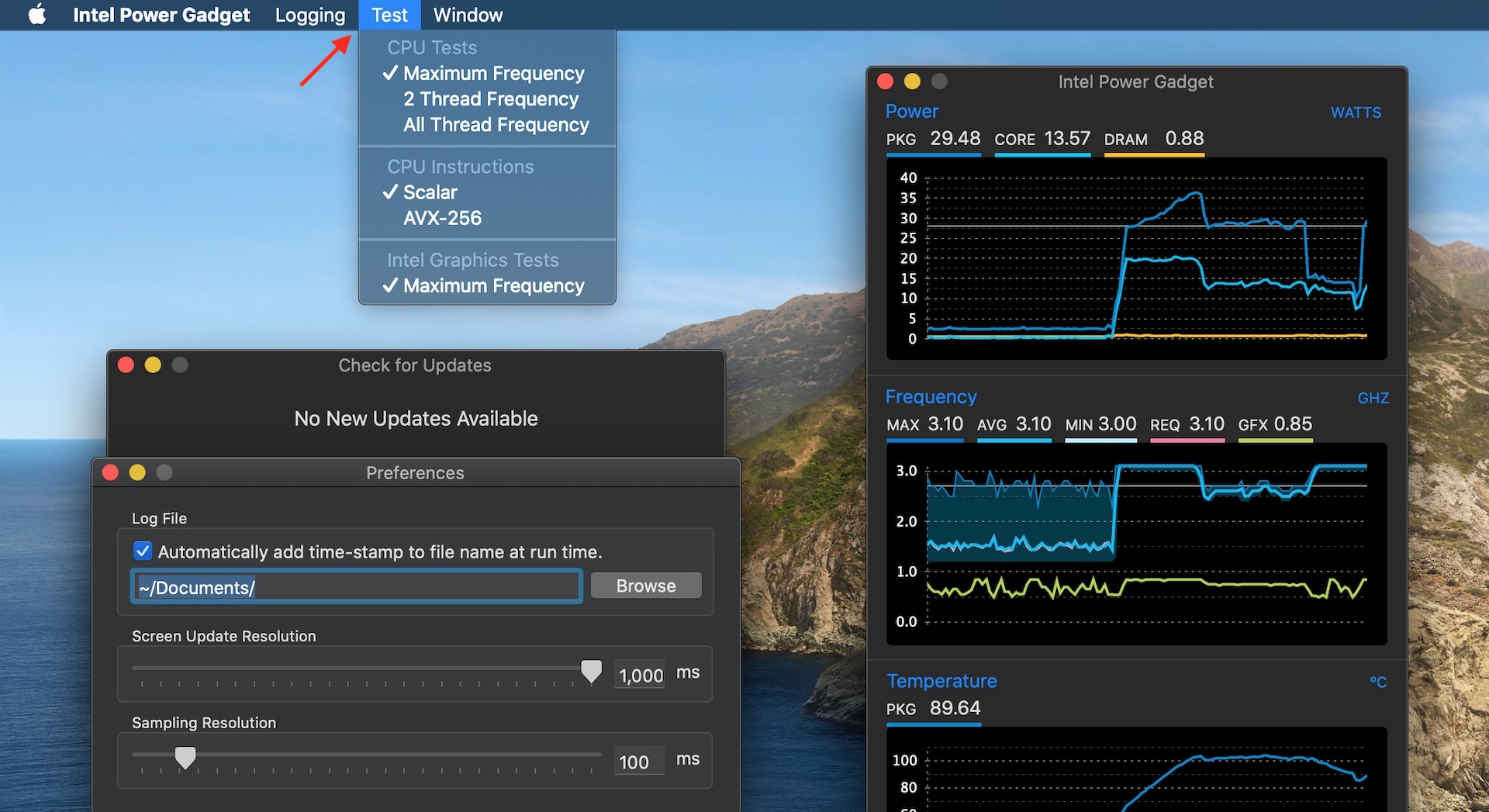
Frequency data may be more meaningful if you sample often and average the frequency samples over time. The instantaneous processor frequency can change significantly from moment to moment. The frequency at which you read samples may have an impact on the accuracy of data. Both StartLog and StopLog cause an internal call to ReadSample. Note that the logged data isn’t written until StopLog is called. Logging can be enabled at any time by calling StartLog, and subsequently disabled by calling StopLog. The sample data from ReadSample can be logged to a file. The API supports reading common individual MSRs without having to specify the MSR address or read an entire sample the supported functions are: GetIAFrequency, GetMaxTemperature, GetTemperature, and GetTDP. There is no method to determine if an MSR address is valid. However, note that specifying an invalid MSR address can crash your system and could potentially corrupt it. The Intel® Power Gadget API also supports reading generic MSRs with ReadMSR, which returns the raw data from the MSR. Note that you must call ReadSample prior to calling GetPowerData, GetRDTSC, and GetTimeInterval, and that you must call ReadSample twice before calling GetTimeInterval and before getting power data (as opposed to frequency or temperature data) from GetPowerData, as they are computed using the difference between two samples. These values are available via GetSysTime and GetRDTSC the time interval between samples is available (in seconds) via GetTimeInterval. ReadSample also reads the system time and Time Stamp Counter (TSC) at the time the sample is read. The currently supported MSR functions are: frequency (0), power (1), temperature (2). The Intel® Power Gadget API currently supports sampling with the following MSRs: processor frequency, estimated processor power, and package temperature. MSRs with function 2 (temperature) return 1 result, which represents the temperature in degrees Celsius. MSRs with function 1 (power) return 3 results, which represent the average power in watts, cumulative energy in Joules, and cumulative energy in milliwatt-hours. MSRs with function 0 (frequency) return 1 result, which represents the frequency in megahertz. An MSR’s function (from GetMsrFunc) determines the amount and meaning of data returned from GetPowerData. The MSR ID is used to get data for a specific MSR with functions GetPowerData, GetMsrName, and GetMsrFunc.Ĭalling GetPowerData for each sampled MSR will provide you with the relevant data from that MSR. GetNumMsrs returns the number of sampled MSRs MSRs are given an ID from 0 to n-1, where n is the number returned by GetNumMsrs.

Meta data on the sampled MSRs can be queried with GetNumMsrs, GetMsrName, and GetMsrFunc. The API supports sampling of specific Model Specific Registers (MSRs). The most common use of the Intel® Power Gadget API is to read samples with ReadSample. To begin you must initialize the library by calling IntelEnergyLibInitialize. –framework IntelPowerGadget in your link command. To link with the Intel® Power Gadget API you simply need to include

INTEL POWER GADGET YOSEMITE DRIVER
The driver is installed to /System/Library/Extensions/EnergyDriver.kext, and the framework is installed to /Library/Frameworks/amework. These are included in the Intel® Power Gadget installer, or as a standalone API installer. To use the API you’ll need the Intel® Power Gadget for Mac* driver and framework. framework) that provides a C interface for reading current estimated processor power, current processor frequency, base frequency, thermal design power (TDP), current temperature, maximum temperature, timestamps, and elapsed time. The Intel® Power Gadget API is a framework (IntelPowerGadget. Intel® Power Gadget and the API are only supported on 2 nd generation and later Intel® Core processors, because previous processors do not support the necessary power Model Specific Registers (MSRs). Intel® Power Gadget is also available for Windows* and Linux*. Intel® Power Gadget also provides a C Application Programming Interface (API) for accessing this power and frequency data in your program. Intel® Power Gadget for Mac* is a GUI application that provides real-time data on processor frequency and estimated processor power, and can log frequency, power, energy, and temperature data over time.
INTEL POWER GADGET YOSEMITE MAC OS
Using the Intel® Power Gadget API on Mac OS X*


 0 kommentar(er)
0 kommentar(er)
